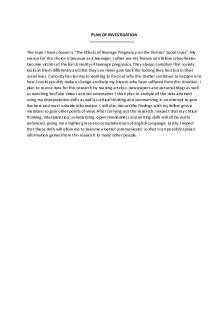SBA MOD 1A & 1B PDF

| Title | SBA MOD 1A & 1B |
|---|---|
| Author | gaming account |
| Course | Bachelor of Arts in Literary and Cultural Studies |
| Institution | Polytechnic University of the Philippines |
| Pages | 10 |
| File Size | 184.3 KB |
| File Type | |
| Total Downloads | 4 |
| Total Views | 185 |
Summary
fasdfasdfasdfasdf...
Description
Module 1 -A The Strategic Management Process
LEARNING OBJECTIVES:
In this introductory lesson, the learning objectives are to understand:
The elements or stages of the strategic management process. The scope of the external and internal environments of business. The meaning and importance of strategic direction, strategy formulation, and strategy implementation. The processes of strategic control and restructuring.
CHAPTER TOPICS:
This module introduces the strategic management process and its role in business organizations. The lessons introduce the strategic management process including external environmental analysis, organizational analysis, the establishment of strategic direction, strategy formulation, strategy implementation, strategic control, and restructuring.
LECTURE OUTLINE:
I. Opening Vignette—IBM IBM provides computer hardware, software, and services in more than 170 countries. Several years ago, the company saw fundamental changes coming. Developing economies were growing rapidly, a new computing architecture was providing unprecedented computing power and an ability to transform oceans of data into usable information, and companies were
seeking to integrate their advanced information technologies with other business operations to improve efficiency and facilitate innovation and growth. In response to these trends, IBM made several bold moves. First, the company remixed its businesses to take advantage of the most attractive business segments. The company exited commodity businesses such as PCs and disk drives as well as acquiring over 100 companies in less than ten years, including PricewaterhouseCoopers Consulting. Internally, the company has formed new units in areas such as analytics, which employs four thousand IBM consultants. Now the company’s historically large hardware operations provide less than 10% of its revenues, with approximately 40% each coming from software and services (the rest is from financing operations). Also, about one-third of IBM’s revenues now come from non-U.S. operations. Growth is especially strong in Brazil, Russia, India, and China. Moving forward, IBM’s CEO Samuel J. Palmisano is positioning the company to be a major player in infusing intelligence into the way the world actually works.
II. What Is Strategic Management?
A. Strategic management is the process through which organizations analyze and learn from their internal and external environments, establish strategic direction, create strategies that are intended to help achieve established goals, and execute those strategies, all in an effort to satisfy key organizational constituencies, which are called stakeholders.
B. External environmental analysis involves evaluation of the broad and task environments to determine trends, threats, and opportunities and to provide a foundation for strategic direction. 1. The broad environment consists of domestic and global environmental forces such as sociocultural, technological, political, and economic trends. The broad environment forms the context within which the firm and its task environment exist. 2. The task environment consists of external stakeholders—groups or individuals outside the organization that is significantly influenced by or have a major impact on the organization.
3. All of the external stakeholders should be analyzed at both the domestic and international levels.
C. Internal stakeholders include managers, employees, and the owners and their representatives (e.g., board of directors). 1. A fully developed internal analysis includes an evaluation of internal stakeholders and the organization’s resources and capabilities to determine strengths, weaknesses, and opportunities for competitive advantage and to identify organizational vulnerabilities that should be corrected.
D. A SWOT (Strengths, Weaknesses, Opportunities, Threats) analysis is a useful technique for organizing an assessment of internal and external environmental sources of influence. 1. Strengths are firm resources and capabilities that can lead to a competitive advantage. 2. Weaknesses are resources and capabilities that the firm does not possess but that are necessary, resulting in a competitive disadvantage. 3. Opportunities are conditions in the broad and task environments that allow a firm to take advantage of organizational strengths, overcome organizational weaknesses, and/or neutralize environmental threats. 4. Threats are conditions in the broad and task environments that may stand in the way of organizational competitiveness or the achievement of stakeholder satisfaction.
E. Strategic direction pertains to the longer-term goals and objectives and defines the purposes for which an organization exists and operates. 1. Strategic leaders have a large impact on the strategies and performance of the firm. One of the most important responsibilities of a strategic leader is to establish direction. Strategic direction pertains to the enduring goals and objectives of the organization. It encompasses a definition of the businesses in which a firm operates, its vision for the future, and its purpose.
2. As a practical matter, there is no way to discuss purpose without also including a discussion of the ethics of the organization. Ethics are the moral standards by which people judge behavior. Business ethics, then, pertain to the moral obligations of businesses to individuals, groups (such as stakeholders), and society as a whole. More often than not, an organization’s ethics are discussed in terms of its values. Organizational values define what matters when making decisions and what is rewarded and reinforced. For instance, organizations may promote values such as honesty, service, hard work, quality, or responsible treatment of stakeholders. 3. Strategic direction may be contained, in part, in a mission statement. Unlike shorter-term goals and strategies, the mission is an enduring part of planning processes within the organization. A well-established strategic direction provides guidance to the managers and employees who are largely responsible for carrying it out. It also can provide external stakeholders with a greater understanding of the organization and what it is seeking to accomplish.
F. Strategy formulation is divided into three types: corporate, business, and functional.
1. A strategy is an organizational plan of action that is intended to move an organization toward the achievement of its shorter-term goals and, ultimately, toward the achievement of its fundamental purposes. 2. Business strategy formulation pertains to domain direction and navigation or how businesses compete in the areas they have selected. 3. Corporate strategy formulation refers primarily to domain definition or the selection of business areas in which the organization will compete. 4. Functional strategy formulation contains the details of how the functional areas such as marketing, operations, finance, and research should work together to achieve the business-level strategy. 5. Corporate strategy decisions are made by the CEO and/or board of directors. If an organization is involved in only one area of business, then business strategy decisions tend to be made by the same people. 6. In diversified organizations, business strategy decisions are made by division heads or business unit managers.
7. Functional decisions are made by functional managers, who represent organizational areas such as operations, finance, personnel, accounting, research and development, or information systems.
G. Strategy implementation involves creating a pattern of decisions and actions that are intended to carry out a plan. 1. Strategy implementation involves creating the functional strategies, systems, structures, and processes needed by the organization in achieving strategic ends. Functional strategies outline the specific actions that each function must undertake to convert business- and corporate-level strategies into actions. 2. Strategic control refers to the processes that lead to adjustments in strategic direction, strategies, or the implementation plan when necessary.
H. As noted earlier, the strategic management process is usually not as sequential or linear as implied by the previous discussion. The activities are usually performed simultaneously, with constant adjustments to assumptions, direction, strategies, and processes as new information is learned and new assessments are made.
I.
Strategic restructuring typically involves a renewed emphasis on the things an organization does well, combined with a variety of tactics to revitalize the organization and strengthen its competitive position.
Module 1 - B The Strategic Management Process
LEARNI NG OBJECTI VES:
I nt hi si nt r oduc t or yl es son,t hel ear ni ngobj ec t i v esar et ounder s t and:
Thedi ffer entper s pec t i v esons t r at egydev el opment . Thei mpor t anc eofi nnov at i onandent r epr eneur s hi p. Theel ement sofs t r at egi ct hi nk i ng.
CHAPTERTOPI CS:
Thi s modul ei nt r oduc es t he al t er nat i v e per spec t i v es on t he pr oces s ofs t r at egy dev el opment ,i nc l udi ngs i t uat i onanal y si s ,envi r onment aldet er mi ni s m,del i ber at ev er s us emer gentst r at egi es,t her es our c ebas edv i ew oft hefir m,s t ak ehol dert heor y ,andgl obal s t r at egi cmanagement .St r at egi ct hi nk i ng,asi tr el at est ocor por at eent r epr eneur s hi p,i s al s oi nt r oduced.
LECTUREOUTLI NE:
III. Alternative Perspectives on Strategy Development
A. The t r adi t i onalpr oc es sf ordev el opi ngs t r at egycons i s t sofanal y z i ngt hei nt er nal and e x t er nalenv i r onment s oft he or gani z at i on t o ar r i v e ator gani z at i onals t r engt hs , weaknes ses ,oppor t uni t i es ,and t hr eat s( SWOT) .The r es ul t sf r om t hi s“ s i t uat i on anal y si s , ”ast hi spr ocessi ss omet i mesc al l ed,ar et hebasi sf ordev el opi ngmi s s i ons , goal s ,ands t r at egi es .
B. Env i r onment aldet er mi ni s m ar guest hatgood managementi s as s oc i at ed wi t h det er mi ni ngwhi c hs t r at egywi l lbes tfi tenv i r onment al ,t ec hni c al ,andhumanf or c esata
par t i c ul arpoi nti nt i me,andt henwor k i ngt ocar r yi tout .Fr om t hi sper s pec t i v e,t hemost s uc c es s f ulor gani z at i onwi l lbet heonet hatbestadapt st oex i s t i ngf or ces.
C. Thepr i nc i pl eofenac t ment ,ont heot herhand,ass umest hator gani z at i onsdonot hav et os ubmi tt oex i s t i ng f or c esi nt he env i r onment —t heyc an,i npar t ,c r eat et hei r env i r onment st hr ough s t r at egi c al l i anc es wi t h st ak ehol der s, adv er t i s i ng, pol i t i c al l obby i ng,andav ar i et yofot heract i v i t i es.
D. Del i ber at es t r at egyi mpl i est hatmanager spl ant opur s ueani nt endeds t r at egi c c our s e.
E. I ns ome c as es ,t he s t r at egy s i mpl y emer ges f r om a s t r eam ofdeci s i ons.An emer gentst r at egy i s one t hatwas notpl anned or i nt ended.Acc or di ng t ot hi s per s pec t i v e,manager sl ear nwhatwi l l wor kt hr oughapr oc es soft r i alander r or .
F . Ther es our c ebas edv i ew oft hefi r mt ak est hepos i t i ont hatanor gani z at i oni sa bundl eofr es our c es . 1. Fi nanc i alr es our c es ,i ncl udi ngal loft hemonet ar yr esour cesf r om whi c hafir m c andr aw. 2. Phy s i c alr es our c es ,suc h as pl ant ,equi pment ,l oc at i on,and ac ces st or aw mat er i al s . 3. Humanr es our c es ,whi c hper t ai nst ot hes ki l l s ,back gr ound,andt r ai ni ngoft he i ndi v i dual swi t hi nt hefi r m. 4. Knowl edgeandl ear ni ngr es our ces,whi c hhel pt hefi r mt oi nnov at eandr emai n c ompet i t i v e. 5. Gener alor gani z at i onalr es our ces ,whi c hi nc l udesa v ar i et yoff act or st hatar e pec ul i art os pec i fi cor gani z at i ons.
G. Thes t ak ehol derv i ew ofs t r at egi cmanagementc ons i der st heor gani z at i onf r om t heper s pec t i v eoft hei nt er nalandex t er nalc ons t i t uenc i est hathav eas t r ongi nt er esti n t heor gani z at i on.
1. Oneoft hefi r stact i v i t i esas s oc i at edwi t hanywel l dones t ak ehol deranal y s i si s t hees t abl i s hmentofpr i or i t i esgi v ent oeac hst ak ehol der .
2. St ak ehol der anal y s i si nv ol v es i dent i f y i ng and pr i or i t i z i ng k ey s t ak ehol der s , ass es s i ngt hei rneeds ,c ol l ect i ngi deasf r om t hem,andi nt egr at i ngt hi sk nowl edgei nt o s t r at egi cmanagementpr oc es s ess uc hast hees t abl i s hmentofs t r at egi cdi r ec t i onand t hef or mul at i onandi mpl ement at i onofs t r at egi es .
3. St ak ehol dermanagementi nc l udesc ommuni c at i ng,negot i at i ng,c ont r ac t i ng,and managi ngr el at i ons hi pswi t hs t ak ehol der s,andmot i v at i ngt hem t obehav ei nway st hat ar ebenefi c i alt ot heor gani z at i onandi t sot herst ak ehol der s .
4. Afi r mt hatmanagesf ors t ak ehol der sal l oc at esmor er es our c est os at i s f y i ngt he needsanddemandsofi t sl egi t i mat est ak ehol der st hanwhati snecess ar yt os i mpl y r et ai nt hei rwi l l f ulpar t i c i pat i oni nt hepr oduc t i v eac t i v i t i esoft hefi r m.Fi r mst hatexhi bi t t hi ss or tofbehav i ordev el opt r ust i ngr el at i onshi pswi t hs t ak ehol der sbas edonpr i nc i pl es ofdi s t r i but i onal ,pr oc edur al ,andi nt er ac t i onal j us t i c e.
5. Di s t r i but i onalj us t i c emeanst hatfi r msgi v emor ev al uebac kt ot hes t ak ehol der s t hathel ped t oc r eat ei tt han whatt heyr eal l yneed t o pr ovi de s i mpl yt or et ai nt hei r i nv ol v ementi nt r ans act i onswi t ht hefir m.Pr oc edur alj us t i c er ef er st oas t ak ehol der ’ s per c ept i onofhow f ai radeci s i onmaki ngpr oc es si s,andi nt er ac t i onalj ust i c eper t ai nst o f ai r nes si nt hewayt hats t ak ehol der sar et r eat edi nt r ans ac t i onswi t ht hefi r m.
H. Manyf or c esar el eadi ngfir msi nt o ani nt er nat i onalar ena.Yet ,gl obals t r at egi c management offer s many new management c hal l enges . Al t hough t he v al ues , r es our ces ,andbus i nesspr ac t i c esofc ount r i esv ar ywi del y ,manyoft hemanagement t ec hni quesar es l owl yc onv er gi ng.
I . Thes t r at egi cmanagementpr oc es smodeluponwhi c ht hi sbooki sbas edr el i es , t os omedegr ee,oneac hoft het heor i esandi deast hathav ebeendes cr i bedi nt hes e s ec t i ons .
IV. Strategic Thinking and Entrepreneurship
A. Ent r epr eneur shi pi st he pr oc es st hr ough whi c hi ndi v i dual s ,gr oups,orfi r ms pur s ue oppor t uni t i es t oc r eat e new v al ue.I ti nv ol ves r ec ogni z i ng orc r eat i ng an oppor t uni t y ,as s embl i ngt her es our c esnec es s ar yt opur s uei t ,andt henmanagi ngt hos e r es our cest obr i ngt henewv ent ur ei nt obei ng.
B. Ent r epr eneur s hi pc an oc c urbot hwi t hi n fi r msandi ndependent l yoft hem.Thi s t y pe of ent r epr eneur shi p i s s omet i mes cal l ed s t r at egi c ent r epr eneur s hi p or i nt r apr eneur s hi p.I ti showi nnov at i oni sus edt oc r eat enewbus i nes sf ort hefi r m.
C. St r at egi ct hi nk i ngi st het er m us edt odescr i bet hec r eat i v eas pect sofs t r at egi c management .A r i gi ds t r at egi c pl anni ng pr oces sc an dr i v e outs t r at egi ct hi nk i ng. St r at egi ct hi nk i nghass ev er alc har act er i s t i c s :
1.
Foc usons t r at egi ci nt entort heov er al lv i s i onoft heor gani z at i on.
2.
Longt er m or i ent at i on.
3.
Cons i der at i onofpas tandpr es ent .
4.
Sy s t emsper s pec t i v e.
5.
Abi l i t yt os ei z eoppor t uni t i es .
6. Sc i ent i fic appr oac h,whi c hi nv ol v es gener at i ng i deas t hr ough a c r eat i v e pr oc es s ,t hent es t i ngt hem ( l i k ehy pot hes es )t os eei ft heywi l lwor k ....
Similar Free PDFs
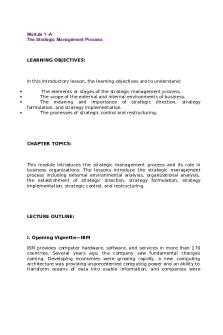
SBA MOD 1A & 1B
- 10 Pages

FIN533 studocu Question 1a 1b 1c
- 3 Pages

Math SBA - math sba csec
- 6 Pages

Mod 4 - Mod 4
- 6 Pages

MOD 7 - MOD 7
- 25 Pages

Practice SBA Topology Notes
- 3 Pages

Principle Of Business SBA
- 13 Pages

Mod Five - Mod Five
- 2 Pages
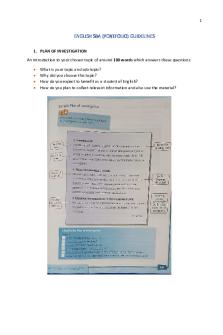
499708865 English SBA Guidelines
- 7 Pages

Assignment 1B
- 1 Pages
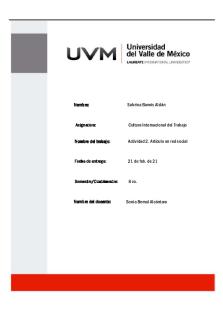
A2 SBA - TAREAS
- 6 Pages
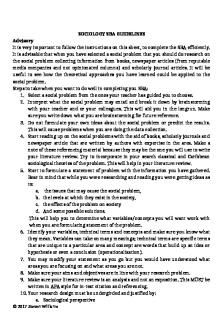
SOCIOLOGY SBA GUIDELINES
- 7 Pages

Amplifiers #1B
- 3 Pages

Essay 1b
- 9 Pages
Popular Institutions
- Tinajero National High School - Annex
- Politeknik Caltex Riau
- Yokohama City University
- SGT University
- University of Al-Qadisiyah
- Divine Word College of Vigan
- Techniek College Rotterdam
- Universidade de Santiago
- Universiti Teknologi MARA Cawangan Johor Kampus Pasir Gudang
- Poltekkes Kemenkes Yogyakarta
- Baguio City National High School
- Colegio san marcos
- preparatoria uno
- Centro de Bachillerato Tecnológico Industrial y de Servicios No. 107
- Dalian Maritime University
- Quang Trung Secondary School
- Colegio Tecnológico en Informática
- Corporación Regional de Educación Superior
- Grupo CEDVA
- Dar Al Uloom University
- Centro de Estudios Preuniversitarios de la Universidad Nacional de Ingeniería
- 上智大学
- Aakash International School, Nuna Majara
- San Felipe Neri Catholic School
- Kang Chiao International School - New Taipei City
- Misamis Occidental National High School
- Institución Educativa Escuela Normal Juan Ladrilleros
- Kolehiyo ng Pantukan
- Batanes State College
- Instituto Continental
- Sekolah Menengah Kejuruan Kesehatan Kaltara (Tarakan)
- Colegio de La Inmaculada Concepcion - Cebu

